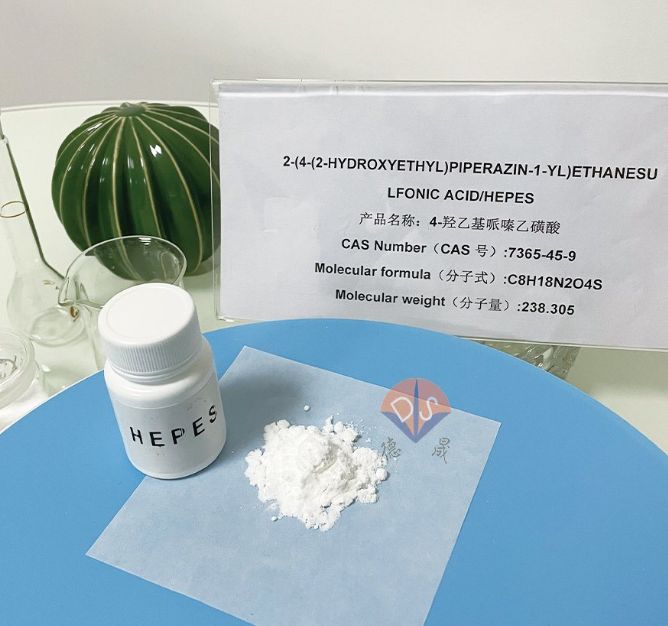HEPES buffer: How can it be missing in oocyte washing!
Release time:
2025-05-16
In the forefront exploration of life sciences, nuclear transfer research has always been a highly anticipated field, carrying the important mission of revealing the mysteries of life and overcoming difficult diseases. In this complex research process, the washing process of fresh oocytes is like the cornerstone of a building, which is crucial to the success or failure of the entire study. HEPES buffer plays an irreplaceable and crucial role as an important supplement to TCM199 culture medium.

HEPES Powder
A key step in nuclear transfer research: oocyte washing
The study of nuclear transfer aims to transfer the nucleus of donor cells into enucleated oocytes, thereby achieving cell reprogramming and development. Fresh oocytes serve as important 'containers' for this process, and their quality directly affects the success rate of nuclear transfer and the potential for subsequent embryonic development. However, oocytes obtained from living organisms often carry impurities, metabolites, and other substances that can interfere with normal physiological functions of cells and even affect the effectiveness of nuclear transplantation. Therefore, the washing process of oocytes is crucial, as it needs to remove impurities as much as possible without damaging the cells, creating favorable conditions for subsequent experiments.
HEPES: The 'Guardian' of Stable Environment
HEPES, The full name is 4-hydroxyethylpiperazine ethanesulfonic acid, which has strong buffering ability. During the washing process of oocytes, cellular metabolism continuously produces acidic substances, and subtle changes in the external environment may also affect the acidity or alkalinity of the solution. HEPES can stabilize the pH value within the physiological range of 7.2-7.4, quickly neutralize acid-base changes, and create a stable living environment for oocytes. This stable pH environment not only helps maintain the structural integrity of the oocyte cell membrane, preventing membrane rupture due to pH fluctuations, but also ensures that the activity of various enzymes inside the cell is in a WENDING state, ensuring normal cellular metabolism and allowing oocytes to maintain good activity and developmental potential during the washing process.
HEPES: Excellent cell compatibility and convenience
In addition to its strong buffering capacity, HEPES also has excellent cell compatibility. It does not undergo chemical reactions with oocytes, nor does it have toxic effects on cells, and can reduce interference with normal cellular metabolism and physiological functions. In practical operation, researchers can flexibly adjust the concentration of HEPES according to different experimental needs. It can quickly and uniformly dissolve in TCM199 medium, ensuring the stability and uniformity of the entire washing system. Compared to other buffering agents, HEPES has advantages in stability and ease of use, greatly reducing the difficulty and risk of experimental operations, and improving the reproducibility and success rate of experiments.

Product packaging
Hubei Xindesheng: A Reliable Choice for Quality HEPES
Hubei Xindesheng Material Technology Co., Ltd. has been deeply involved in the field of biological buffering agents for many years, always pursuing high quality and high standards, and committed to providing reliable product support for scientific research. HEPES produced by Xindesheng has high purity and stable performance. Through strict quality testing processes, every batch of products can meet the rigorous requirements of scientific research experiments. Whether it is the need for oocyte washing in nuclear transfer research or the complex challenges in other life science experiments, New Desheng's HEPES can provide excellent quality support for researchers!
Contact details
Contact number
Address: C8, Guanggu United Science and Technology City, Ezhou City, Hubei Province
Fax:0711-3704 589
Follow us



